Categories: CarmupediaTechnical
Date: July 4th, 2022
5G – That you should know
Summary
5G5G is short for “fifth generation”: 5G is set to be as much as 100 times faster than 4G. 5G networks will have greater bandwidth, giving faster download speeds. 5G is the fifth generation technology standard for cellular networks. More refers to the network of the fifth mobile phone generation and is thus the direct successor to LTELTE – 4G – is the of succession of 3G – with the right provider you can get a download speed up to 500mb/s and a upload speed of 100mb/s More or Advanced LTELTE – 4G – is the of succession of 3G – with the right provider you can get a download speed up to 500mb/s and a upload speed of 100mb/s More (4G) and UMTS (3G3G – is the third generation of mobile internet technology. It close to a complete shut down as newer generations are taking over. The highest possible download rate was 43mb/s. More). The 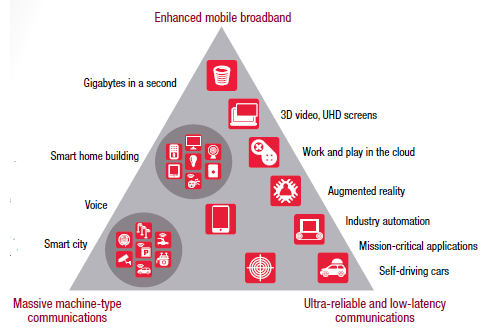 standard will change many things thanks to much faster data transmission, real-time communication, increased networking in the smart home, significant improvement for digitalisation and is a prerequisite for autonomous driving in level 4/5.
standard will change many things thanks to much faster data transmission, real-time communication, increased networking in the smart home, significant improvement for digitalisation and is a prerequisite for autonomous driving in level 4/5.
Where is the decisive benefit of 5G?
The biggest advantage of 5G5G is short for “fifth generation”: 5G is set to be as much as 100 times faster than 4G. 5G networks will have greater bandwidth, giving faster download speeds. 5G is the fifth generation technology standard for cellular networks. More technology compared to its predecessors is the many times higher speed of data transmission. For example, television broadcasts can be transmitted from multiple perspectives via the internet without delays in the future. Intelligent cars can exchange their telemetry data with each other and the infrastructure (car2x-communication), prevent accidents and drive autonomously with level 4/5.
What are the disadvantages of 5G?
Due to the higher transmission frequencies, the number of transmission masts increases significantly. The costs – both for the construction of the network and for its operation – are expected to be higher than the costs for 4G networks due to the greater mast density. Commissioning also requires extensive testing for network coverage, quality assurance and integration into existing infrastructures.
Is the 5G network secure?
5G5G is short for “fifth generation”: 5G is set to be as much as 100 times faster than 4G. 5G networks will have greater bandwidth, giving faster download speeds. 5G is the fifth generation technology standard for cellular networks. More components are secured separately with new cryptographic solutions. This ensures that in the event of individual components being compromised, the protection of other components continues. “Authentication Confirmation” (AC) is a new mechanism and secures the identity of the subscribers. The long-term identity of the subscribers (IMSI) will be transmitted encrypted (previously unencrypted) from 5G.
Areas of application for 5G5G is short for “fifth generation”: 5G is set to be as much as 100 times faster than 4G. 5G networks will have greater bandwidth, giving faster download speeds. 5G is the fifth generation technology standard for cellular networks. More NR
The areas of application can be summarised in five central areas.
– smartphones and routers (eMBB).
– Vehicle to Everything (V2X),
– Machine to Machine applications (M2M),
– Internet of Things (IoT),
– Fixed Wireless Access / 5G5G is short for “fifth generation”: 5G is set to be as much as 100 times faster than 4G. 5G networks will have greater bandwidth, giving faster download speeds. 5G is the fifth generation technology standard for cellular networks. More Broadcast (transmitting TV and radio over the air, replacing the DVB-T2 and DAB+ standards in use today).
Details
4G vs. 5G: What are the main differences?
4G vs. 5G: What are the differences?
| 4G | 5G5G is short for “fifth generation”: 5G is set to be as much as 100 times faster than 4G. 5G networks will have greater bandwidth, giving faster download speeds. 5G is the fifth generation technology standard for cellular networks. More | |
|---|---|---|
| latency** | 60 – 98 ms | >1 ms |
| possible download speed | 1 GBit/s | 10 GBit/s |
| base stations | cell masts | small cells |
| OFDM* coding | 20 MHz channels | 100 – 800 Mhz channels |
| possible cell density | 200 – 400 users per cell | 10 times higher than 4G |
| *OFDM: Orthogonal Frequency Division Multiplexing |
**latency: delay time |
Technical details
 New Spectrum and Bandwidth Impact Signal Quality
New Spectrum and Bandwidth Impact Signal Quality
5G5G is short for “fifth generation”: 5G is set to be as much as 100 times faster than 4G. 5G networks will have greater bandwidth, giving faster download speeds. 5G is the fifth generation technology standard for cellular networks. More New Radio (NR) specifies new frequency bands to enable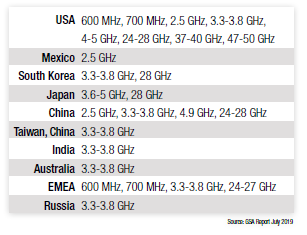
higher data throughput for applications like streaming HD
video and allow for more network capacity. There are new
bands between 3.5 GHz and 5 GHz, up to 52.6 GHz, and even
up to 100 GHz where more contiguous bandwidth is available.
Implementing air interfaces at millimeter-wave (mmWave)
frequencies with up to 1 GHz bandwidth means that you will
need to correct for signal quality issues like path loss, flatness,
phase noise, and linearity.
 Advanced Beamforming Techniques Require System-Level Design
Advanced Beamforming Techniques Require System-Level Design
5G5G is short for “fifth generation”: 5G is set to be as much as 100 times faster than 4G. 5G networks will have greater bandwidth, giving faster download speeds. 5G is the fifth generation technology standard for cellular networks. More NR uses advanced beamforming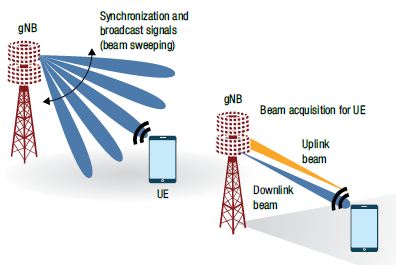
to overcome path loss and multipath
signal propagation issues that come with
mmWave frequencies. Beamforming can
use steerable antenna arrays that deliver
antenna gain and better signal-to-noise
interference ratio (SNIR) to specified
user equipment (UE). Making the most of
the technology requires new design and
system-level test approaches.
 Waveform and Flexible Numerology Means PAPR Challenges
Waveform and Flexible Numerology Means PAPR Challenges
5G5G is short for “fifth generation”: 5G is set to be as much as 100 times faster than 4G. 5G networks will have greater bandwidth, giving faster download speeds. 5G is the fifth generation technology standard for cellular networks. More NR Release 15 uses the cyclic prefix orthogonal frequency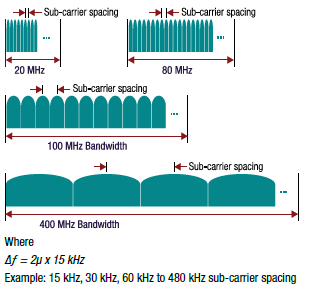
division multiplexing (CP-OFDM) waveform in the downlink and the
uplink (UL) with flexible numerology. This type of waveform exhibits
a high peak-to-average power ratio (PAPR), which increases the
demand on the performance of RF power amplifiers. 3GPP defines
different numerologies for mmWave and sub-6 GHz frequencies,
with larger sub-carrier spacing for higher frequencies. An NR
carrier can also have multiple simultaneous numerologies in
different groups of resource blocks that can change dynamically.
This allows for much more flexibility but increased inter-carrier
interference could result in a slightly higher PAPR. The NR UL can
use the discrete Fourier transform spread OFDM (DFT-s-OFDM)
waveform used in LTE UL to reduce the PAPR for UEs in power or
energy-limited scenarios.
 mmWave Frequencies Require OTAOTA – automotive over-the-air- is the new way cars use to automatically update their firmware and software. The manufacturer uploads the update data to a cloud, which is then forwarded to the car via a mobile connection, where it must be confirmed by the car owner, then installed, and finally feedback is sent back to the OEM. More Test
mmWave Frequencies Require OTAOTA – automotive over-the-air- is the new way cars use to automatically update their firmware and software. The manufacturer uploads the update data to a cloud, which is then forwarded to the car via a mobile connection, where it must be confirmed by the car owner, then installed, and finally feedback is sent back to the OEM. More Test
At mmWave frequencies, small-size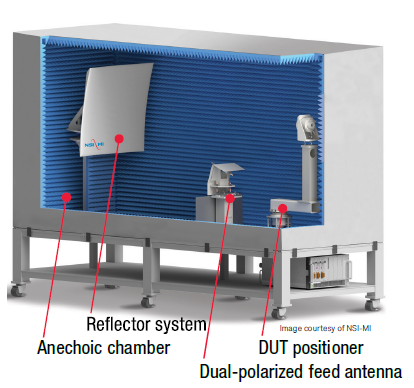
antennas require over-the-air (OTA)
testing — a complex and expensive
approach. A compact antenna test
range (CATR) uses a parabolic reflector
system and rotating positioner to
eliminate the need for large and
expensive chambers.
 Multi-Waveform Coexistence Presents Interference Issues
Multi-Waveform Coexistence Presents Interference Issues
5G5G is short for “fifth generation”: 5G is set to be as much as 100 times faster than 4G. 5G networks will have greater bandwidth, giving faster download speeds. 5G is the fifth generation technology standard for cellular networks. More NR must coexist with many existing services, and new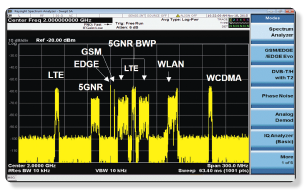
ones that support 5G use cases. Different signals in adjacent
and non-contiguous spectrum make interference a key
challenge. Reducing the adjacent spectrum interference
requires minimizing in-band and out-of-band emissions.
 Network Changes Are Inevitable
Network Changes Are Inevitable
5G5G is short for “fifth generation”: 5G is set to be as much as 100 times faster than 4G. 5G networks will have greater bandwidth, giving faster download speeds. 5G is the fifth generation technology standard for cellular networks. More NR will drastically increase network traffic. Supporting 5G5G is short for “fifth generation”: 5G is set to be as much as 100 times faster than 4G. 5G networks will have greater bandwidth, giving faster download speeds. 5G is the fifth generation technology standard for cellular networks. More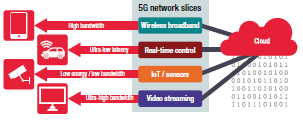
NR use models, while minimizing cost, requires new network
technologies. Network slicing makes the network more dynamic,
enabling operators to allocate speed, capacity, and coverage.
Cloud RAN moves baseband processing into the cloud, making
mobile connections more efficient.
 5G5G is short for “fifth generation”: 5G is set to be as much as 100 times faster than 4G. 5G networks will have greater bandwidth, giving faster download speeds. 5G is the fifth generation technology standard for cellular networks. More Devices Require Real-World Testing
5G5G is short for “fifth generation”: 5G is set to be as much as 100 times faster than 4G. 5G networks will have greater bandwidth, giving faster download speeds. 5G is the fifth generation technology standard for cellular networks. More Devices Require Real-World Testing
5G5G is short for “fifth generation”: 5G is set to be as much as 100 times faster than 4G. 5G networks will have greater bandwidth, giving faster download speeds. 5G is the fifth generation technology standard for cellular networks. More NR provides the physical-layer frame structure, new reference
signals, and new transmission modes to support 5G5G is short for “fifth generation”: 5G is set to be as much as 100 times faster than 4G. 5G networks will have greater bandwidth, giving faster download speeds. 5G is the fifth generation technology standard for cellular networks. More eMBB data
rates. It is essential to understand the 3D beam pattern to ensure
the beams can connect to the base station to deliver the desired
performance, reliability, and user experience. Devices need
to operate in environments that have signal
propagation issues. These real-world
impairments impact device performance
and require evaluation. Channel emulation
enables the characterization of end-to-end
full-stack data throughput while emulating a
variety of real-world radio conditions.
Sources
- Keysight study www.keysight.com
- shutterstock

Written by Carmupedia Editorial Office
You might also be interested in
We are pleased to announce that the first results of the data provider research that we conducted are ready.
The principle is simple, anyone who played with LEGO as a child will remember well: many different things can be put together from a set of same individual parts. The car makers are increasingly resorting to this principle
Last year in autumn, we informed you about the ECJ ruling against FCA Italy (since 2023: Stellantis) and its "Secure Gateway". Last week, this ruling has also been confirmed by the Regional Court of Cologne in Germany, which asked the ECJ for clarification last year.
Data management in the development of autonomous driving functions
The S-OTP (secure on-board telematics platform) is still under discussion. Although it has lost some ground next to the Data Act approach presented in February 2022 by the EU Commission, it should still be known as an alternative solution.